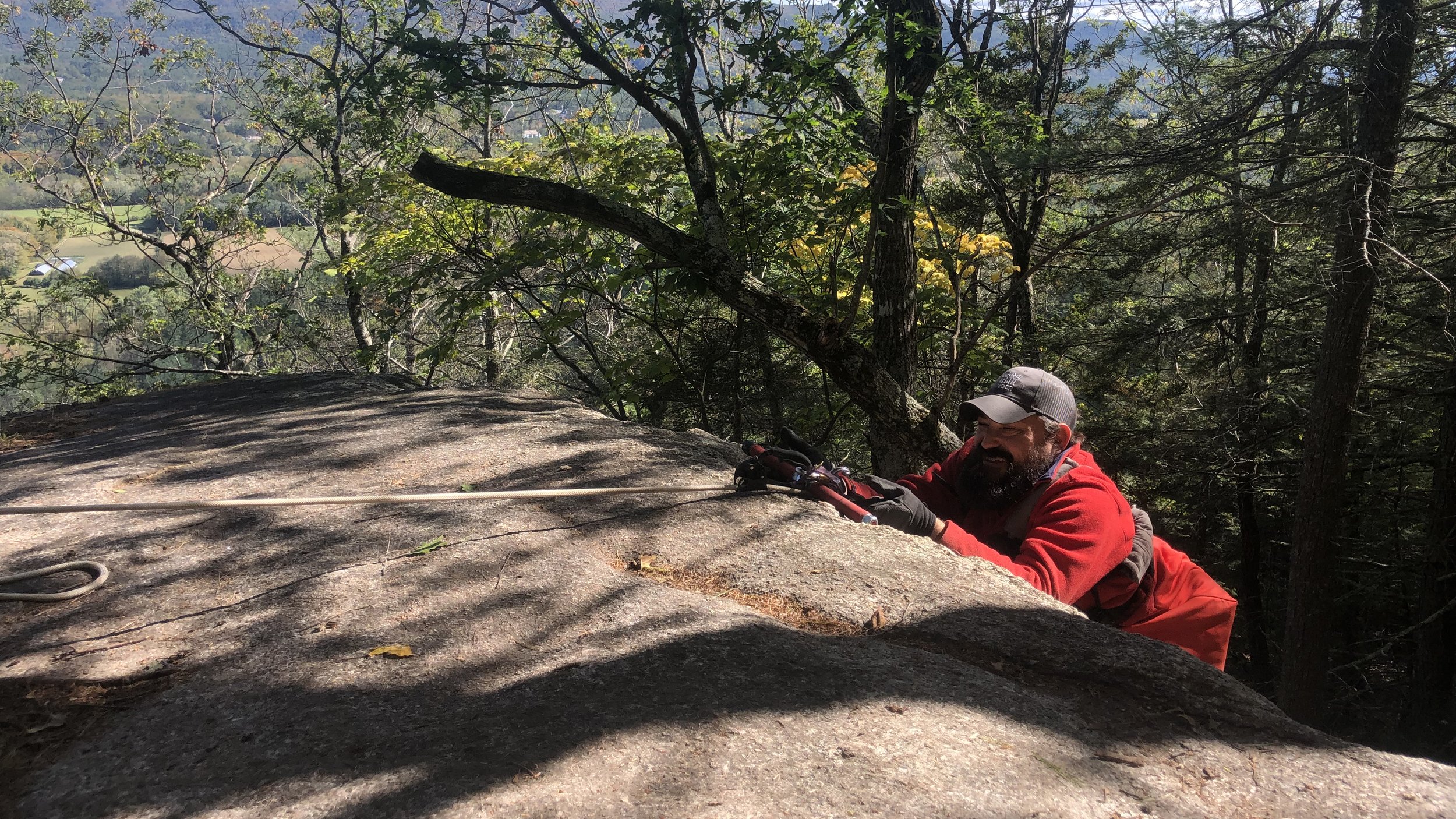By Enock Glidden
With access, I am a climber. Once I’m at a climb and on the wall, I’m like any other climber, working through the beta and finding my path up the wall. The barrier I face most often isn’t the climbing itself—it’s the dreaded approach.
I started climbing about 10 years ago after losing a friend on Mount Rainier. I had no idea if a wheelchair user could climb mountains, but I made it my mission to find out. Since then, I’ve had the opportunity to climb in some of America’s greatest climbing areas, from the Gunks to Yosemite and many places in between. Sometimes approaches provide easy roadside access. But more often, they pose a serious barrier for wheelchair users like me, requiring an entourage of people to help me get to a climb.
Since 2021, I’ve been training at a small wall at Cathedral Ledge in North Conway, New Hampshire. I can’t reach the wall by myself—I need someone there to help me get to the wall and help me get back out of the climbing area. The trail grade is varied and often steep, with soft terrain covered in natural debris—impossible for a person in a wheelchair to traverse independently.
But with the help of Mike Morin at Access Fund, Mount Washington Valley Adaptive Sports, Friends of the Ledges, and other organizations, that’s going to change. Together, we’re spearheading an effort to build a first-of-its-kind accessible approach trail to Cathedral Ledge that will allow people who use wheelchairs to reach the cliff without the help of others.
Enock Glidden topping out on the Wall of the Hurley Morning Light. Ancestral lands of Wabanaki, N’dakina, and Pequawket. © Mike Morin. Headshot © Dave Dostie.
All grades on the new trail will be 10 percent or less. There will be a wide firm path with resting areas at the top of some of the steeper grades. At the end of the trail, there will be a safe staging area for adaptive climbers to set up their gear and lower into the climbing area safely. With the help of a professional accessible trail builder, we are working to show the climbing community what’s possible.
This new trail will mean more than just access—it means independence for adaptive climbers who use a wheelchair. They’ll be able to show up like any other climber and get to the wall, climb, get back out, and head home all on their own. Not every climbing area can have an accessible trail, but there are hundreds around the country where it could be done. I believe it should be done—it’s our responsibility as climbers to improve access for everyone. More climbers means more climbing advocates, and more climbing advocates means the continued growth of our movement. Get involved with your local climbing organization today to see how you can help improve climbing access and conservation in your local area.



